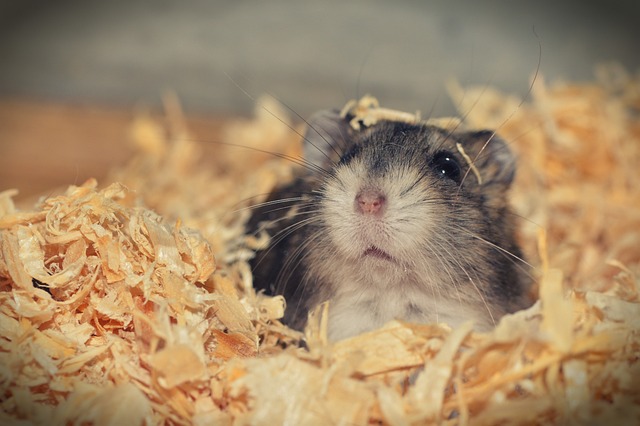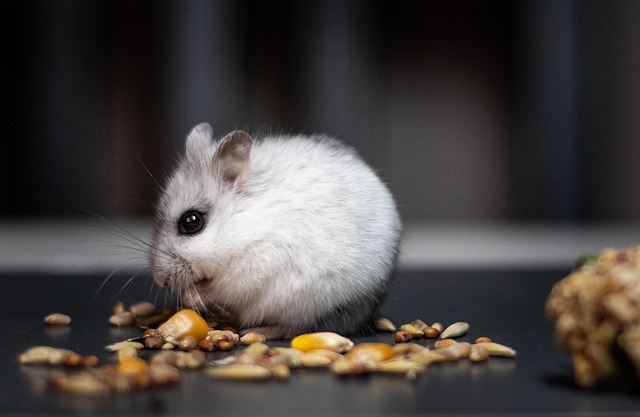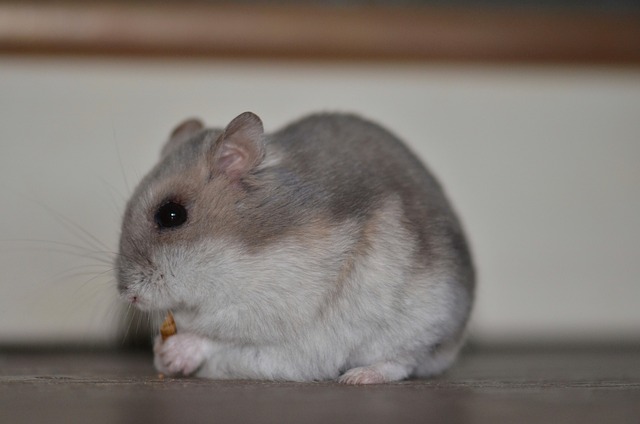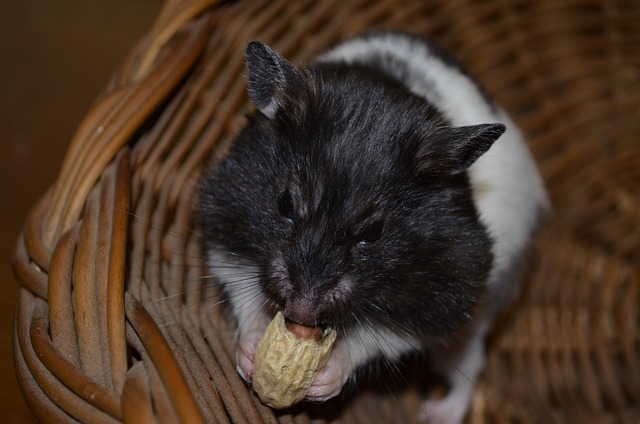Are Hamsters Better Than Dogs – Hamsters.pk
Size and Space Requirements: Comparing the Living Arrangements of Hamsters and Dogs
When considering the perfect pet for your home, size and space requirements play a crucial role in the decision-making process. Two popular pet options, hamsters and dogs, have vastly different needs when it comes to their living arrangements. In this article, we’ll explore the space requirements for both hamsters and dogs to help you determine which pet might be the best fit for your home.
Hamsters: Compact and Convenient
Hamsters are known for their small size, making them an ideal pet for those with limited living space. These tiny rodents typically weigh between 2 to 6 ounces and measure around 2 to 4 inches in length. Due to their compact size, hamsters can comfortably live in a cage or habitat that takes up minimal room in your home.
When housing a hamster, it’s essential to provide them with a cage that offers ample space for exercise, exploration, and play. A general rule of thumb is to choose a cage that is at least 24 inches by 12 inches and 12 inches tall. This size allows your hamster to move freely, with room for essential accessories such as a wheel, hiding spots, and toys.
Dogs: Varied Sizes and Space Needs
In contrast to hamsters, dogs come in a wide range of sizes, from tiny toy breeds to large, muscular working dogs. Consequently, the space requirements for dogs vary greatly depending on the breed and size of the dog.
Smaller dog breeds, such as Chihuahuas or Pugs, can adapt well to apartment living or homes with limited space. These dogs typically weigh under 20 pounds and require less room for exercise and play. However, they still need daily walks and opportunities for outdoor exploration to maintain their physical and mental well-being.
On the other hand, larger dog breeds like German Shepherds, Labrador Retrievers, or Great Danes have more substantial space requirements. These dogs often weigh over 50 pounds and need ample room to move, stretch, and play. Homes with spacious living areas, securely fenced yards, or nearby parks are ideal for accommodating the needs of larger dog breeds.
Outdoor Space Considerations
In addition to indoor living space, it’s crucial to consider the outdoor space available for your pet. Hamsters, being indoor animals, do not require any outdoor space. They can thrive entirely within the confines of their cage or habitat.
Dogs, however, need regular access to outdoor areas for exercise, playtime, and potty breaks. The amount of outdoor space required depends on the size and energy level of the dog. Smaller, less active dogs may be content with short walks and limited outdoor playtime, while larger, high-energy breeds may require extensive outdoor space and longer periods of exercise.
Conclusion
When comparing the living arrangements of hamsters and dogs, it’s clear that size and space requirements play a significant role. Hamsters, with their compact size and minimal space needs, are well-suited for individuals with limited living space or those who prefer a low-maintenance pet. Dogs, on the other hand, have varying space requirements based on their breed and size, with larger breeds needing more substantial indoor and outdoor areas to thrive.
Ultimately, the decision between a hamster and a dog as a pet depends on your lifestyle, living situation, and the amount of time and space you can dedicate to your furry companion. By carefully considering the size and space requirements of each pet, you can make an informed choice that ensures a happy and comfortable life for both you and your beloved animal friend.
Ease of Care: Examining the Daily Responsibilities of Owning Hamsters vs. Dogs

When considering a pet, it’s essential to understand the daily responsibilities that come with owning different types of animals. Hamsters and dogs are two popular pet choices, but they have distinct care requirements that potential owners should be aware of. In this article, we’ll explore the daily responsibilities of owning hamsters versus dogs to help you make an informed decision about which pet best suits your lifestyle.
Hamster Care: Low-Maintenance and Straightforward
Hamsters are often considered low-maintenance pets, as their daily care requirements are relatively simple and straightforward. Here are some key aspects of hamster care:
- Feeding: Hamsters require a balanced diet consisting of commercial hamster food, fresh vegetables, and occasional treats. They typically need to be fed once a day, with fresh water always available.
- Cage Cleaning: Hamster cages should be spot-cleaned daily to remove droppings and uneaten food. A thorough cleaning, including washing the cage and replacing the bedding, should be done once a week.
- Exercise and Enrichment: Hamsters need daily exercise and mental stimulation. Providing a wheel, tunnels, and toys within their cage will keep them active and entertained.
- Handling and Socialization: While hamsters can be handled and socialized, they require gentle handling and may not crave human interaction as much as other pets. Daily handling sessions of 10-15 minutes are sufficient for most hamsters.
Dog Care: Time-Intensive and Hands-On
In contrast to hamsters, dogs have more extensive and time-intensive care requirements. Here are the main aspects of daily dog care:
- Feeding and Watering: Dogs need to be fed a balanced diet appropriate for their age, size, and activity level. Most dogs require two meals a day, with fresh water always available.
- Exercise and Playtime: Dogs need daily physical exercise and mental stimulation. This includes walks, runs, playtime, and interactive games. The amount of exercise needed varies depending on the dog’s breed, age, and energy level.
- Training and Socialization: Dogs require consistent training and socialization to develop good behavior and manners. This involves regular training sessions, positive reinforcement, and exposure to various people, animals, and environments.
- Grooming: Depending on the breed, dogs may require regular grooming, such as brushing, bathing, and nail trimming. Some breeds with long or thick coats may need professional grooming every few weeks.
- Veterinary Care: Dogs need routine veterinary check-ups, vaccinations, and preventive care, such as flea and heartworm prevention. They may also require additional medical attention in case of illness or injury.
- Potty Training and Walks: Dogs need to be potty trained and taken on regular walks for bathroom breaks. This requires a consistent schedule and patience during the training process.
Time Commitment and Lifestyle Considerations
When comparing the daily responsibilities of owning hamsters versus dogs, it’s clear that dogs require a more significant time commitment and hands-on care. Hamsters, being smaller and more independent, can be suitable for individuals with busy schedules or limited time for pet care.
However, it’s important to note that while hamsters may be less demanding, they still require daily attention and care to ensure their well-being. Neglecting their basic needs can lead to health issues and decreased quality of life.
On the other hand, dogs offer greater companionship and opportunities for interaction, but they also demand more time, energy, and resources from their owners. Prospective dog owners should carefully consider their lifestyle, work schedule, and ability to provide consistent care before bringing a dog into their lives.
Conclusion
Understanding the daily responsibilities of owning hamsters versus dogs is crucial when deciding which pet is the best fit for your lifestyle. Hamsters offer a low-maintenance and straightforward care routine, making them suitable for those with limited time or experience with pets. Dogs, while providing unparalleled companionship and loyalty, require a more significant time investment and hands-on care.
Ultimately, the choice between a hamster and a dog depends on your personal preferences, lifestyle, and the level of commitment you are willing to make to your pet. By thoroughly considering the daily responsibilities and care requirements of each species, you can ensure that you are prepared to provide a loving and nurturing environment for your chosen companion.
Interaction and Companionship: Exploring the Social Aspects of Hamsters and Dogs as Pets
When choosing a pet, many people consider the level of interaction and companionship they desire from their furry friend. Hamsters and dogs are two popular pet options, but they offer distinct social experiences. In this article, we’ll explore the social aspects of hamsters and dogs as pets to help you determine which animal aligns better with your expectations for interaction and companionship.
Hamsters: Independent and Low-Key Companions
Hamsters are known for their independent nature and relatively low-key social needs. While they can form bonds with their owners, they don’t require the same level of constant interaction and attention as other pets. Here are some key points about the social aspects of hamsters:
- Solitary Animals: Hamsters are solitary animals and typically prefer to live alone. In the wild, they interact with other hamsters only for mating purposes. As pets, they are content with minimal social interaction and can thrive without the presence of other hamsters.
- Nocturnal Activity: Hamsters are nocturnal creatures, meaning they are most active during the night. This can limit the amount of interaction they have with their owners, who are usually active during the day.
- Brief Social Interactions: While hamsters can enjoy brief periods of handling and interaction with their owners, they generally don’t crave long durations of social engagement. They may become stressed if handled for extended periods or forced to interact when they prefer to rest.
- Observational Enjoyment: Many hamster owners find joy in observing their pets’ adorable behaviors, such as running on their wheel, burrowing, or stuffing their cheeks with food. These independent activities can provide entertainment and a sense of companionship without the need for constant direct interaction.
Dogs: Highly Social and Interactive Companions
In contrast to hamsters, dogs are highly social animals that thrive on interaction and companionship with their human families. They have been domesticated for thousands of years and have evolved to form strong bonds with people. Here are some key aspects of the social nature of dogs:
- Pack Animals: Dogs are descendants of wolves, which are highly social pack animals. As a result, dogs have an innate desire for social interaction and companionship. They form close bonds with their owners and often consider them as members of their pack.
- Constant Interaction: Dogs crave regular attention, interaction, and affection from their owners. They enjoy spending time with their human companions, whether it’s through playtime, walks, or simply relaxing together.
- Emotional Support: Dogs are known for their uncanny ability to provide emotional support and comfort to their owners. They are attuned to human emotions and often respond with empathy and affection when their owners are feeling down or stressed.
- Training and Socialization: Dogs benefit greatly from training and socialization, which not only strengthens the bond between the dog and owner but also helps the dog develop good behavior and manners. Engaging in training activities and socializing with other dogs and people is an essential part of a dog’s social development.
- Companionship and Loyalty: Dogs are renowned for their unwavering loyalty and companionship. They form deep, lifelong bonds with their owners and are often considered cherished family members.
Choosing the Right Pet for Your Social Needs
When deciding between a hamster and a dog based on interaction and companionship, it’s essential to consider your own social needs and lifestyle preferences. If you prefer a low-maintenance pet that doesn’t require constant attention and interaction, a hamster may be a suitable choice. They can provide a sense of companionship through their cute antics and independent nature.
On the other hand, if you seek a highly interactive and socially engaging pet that will form a deep bond with you, a dog may be the better option. Dogs offer unparalleled companionship, emotional support, and opportunities for shared activities and adventures.
Conclusion
Hamsters and dogs offer contrasting social experiences as pets. Hamsters are independent, low-key companions that don’t require extensive social interaction, while dogs are highly social and thrive on constant companionship and attention from their owners.
When choosing between a hamster and a dog, it’s crucial to align your expectations for interaction and companionship with the natural social behaviors of each species. By understanding the social aspects of hamsters and dogs, you can make an informed decision and select the pet that best fits your lifestyle and emotional needs.
Remember, regardless of which pet you choose, both hamsters and dogs require love, care, and commitment to ensure their physical and emotional well-being. By providing a nurturing environment and meeting their social needs, you can enjoy a rewarding and fulfilling relationship with your furry companion.
Cost Considerations: Analyzing the Financial Implications of Choosing Between Hamsters and Dogs
When deciding on a pet, it’s essential to consider not only the companionship and joy they bring but also the financial responsibilities associated with their care. Hamsters and dogs, two popular pet choices, have significantly different costs associated with them. In this article, we’ll analyze the financial implications of choosing between hamsters and dogs to help you make an informed decision that aligns with your budget.
Initial Costs: Purchase Price and Essential Supplies
The initial costs of acquiring a hamster or a dog can vary greatly. Here’s a breakdown of what to expect:
- Hamsters: The purchase price of a hamster typically ranges from $10 to $30, depending on the breed and where you acquire them. Additionally, you’ll need to invest in a suitable cage, bedding, food, water bottles, and toys, which can cost around $100 to $200 initially.
- Dogs: The cost of purchasing a dog varies significantly based on the breed, age, and source. Adopting a dog from a shelter or rescue organization can cost anywhere from $50 to $500, while purchasing a purebred puppy from a breeder can range from $500 to several thousand dollars. Essential supplies for a new dog, such as a collar, leash, bed, food and water bowls, and initial vaccinations, can add up to $200 to $800 or more.
Ongoing Expenses: Food, Healthcare, and Maintenance
Beyond the initial costs, it’s crucial to consider the ongoing expenses associated with caring for your pet. Here’s a comparison of the typical ongoing costs for hamsters and dogs:
- Hamsters:
- Food: Hamster food, consisting of pellets, seeds, and occasional fresh vegetables, costs around $10 to $20 per month.
- Bedding: Replacing hamster bedding regularly can cost approximately $10 to $20 per month.
- Healthcare: Annual check-ups and occasional veterinary visits for hamsters can cost $50 to $100 per year, assuming no major health issues arise.
- Dogs:
- Food: The cost of dog food varies based on the size and breed of the dog, as well as the quality of the food. On average, dog owners can expect to spend $20 to $100 per month on food.
- Healthcare: Annual check-ups, vaccinations, and preventive medications for dogs can cost $200 to $800 per year. In case of illnesses or injuries, veterinary expenses can increase significantly.
- Grooming: Depending on the breed and coat type, regular grooming expenses for dogs can range from $30 to $100 per session, with some breeds requiring more frequent grooming.
- Training and Accessories: Obedience training classes, toys, and other accessories for dogs can add up to $100 to $500 or more per year.
Long-Term Financial Commitment
When considering the financial implications of owning a hamster or a dog, it’s important to factor in the long-term commitment. Here’s what to keep in mind:
- Hamsters: Hamsters have a relatively short lifespan of 2 to 3 years. While the ongoing costs of caring for a hamster are lower compared to dogs, it’s still important to budget for their needs throughout their life.
- Dogs: Dogs have a much longer lifespan, typically ranging from 10 to 15 years or more, depending on the breed and size. This means that the financial commitment of owning a dog is significantly longer than that of a hamster. It’s essential to consider the long-term costs of food, healthcare, grooming, and potential emergency expenses when deciding to bring a dog into your life.
Lifestyle and Budget Considerations
Ultimately, the decision between a hamster and a dog should align with your lifestyle and financial capabilities. If you have limited financial resources or live in a small space, a hamster may be a more suitable choice. They have lower initial and ongoing costs and require less space compared to dogs.
On the other hand, if you have a larger budget, ample living space, and are prepared for the long-term financial commitment, a dog can be a rewarding and fulfilling companion. However, it’s crucial to carefully assess your financial stability and ability to provide for a dog’s needs throughout their lifetime before making the decision.
Conclusion
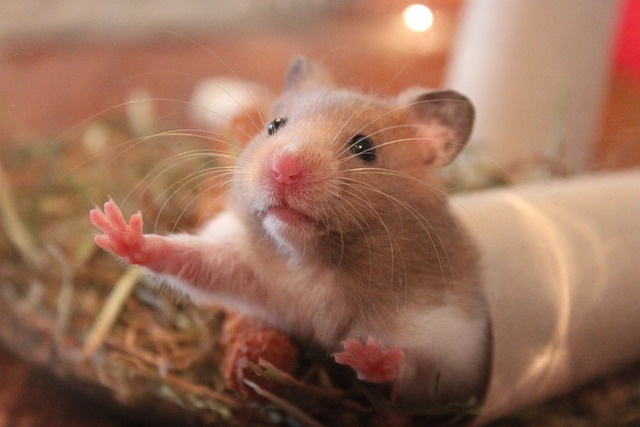
Choosing between a hamster and a dog involves careful consideration of the financial implications associated with each pet. Hamsters have lower initial and ongoing costs, making them a more budget-friendly option for those with limited financial resources. Dogs, while offering unparalleled companionship and loyalty, come with significantly higher expenses and a longer financial commitment.
By thoroughly analyzing the costs of purchasing, feeding, healthcare, grooming, and other associated expenses, you can make an informed decision that aligns with your financial capabilities and lifestyle. Remember, responsible pet ownership involves not only providing love and care but also ensuring that you can meet your pet’s needs throughout their lifetime.
Regardless of which pet you choose, it’s essential to prioritize their well-being and allocate sufficient funds for their care. By doing so, you can enjoy a rewarding and fulfilling relationship with your furry companion while ensuring their health and happiness.

